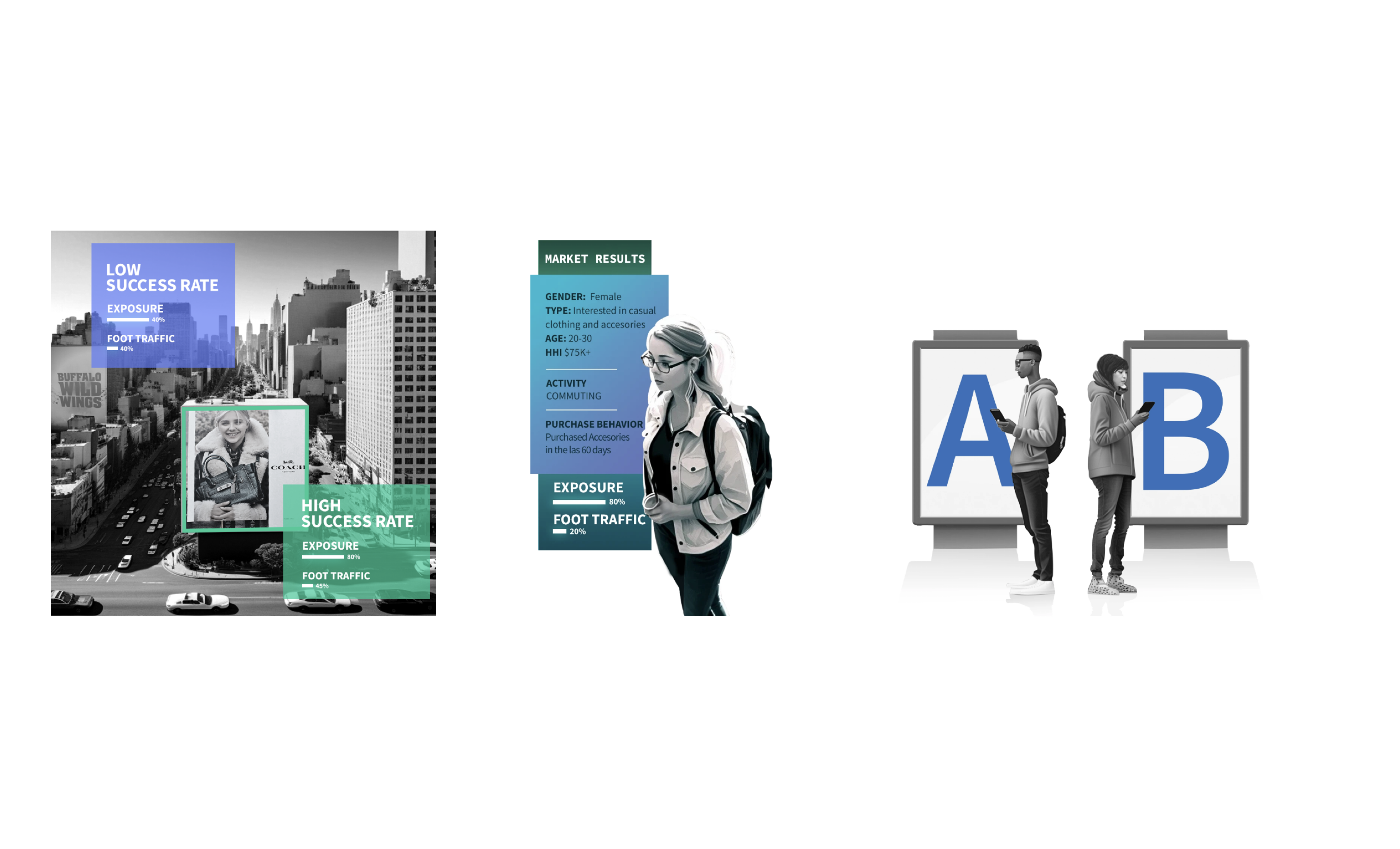
Out-of-Home advertising (OOH) has long been used to increase brand awareness and create positive brand sentiment amongst consumers.
Brand Survey Studies can provide visibility and insights into brand awareness, recommendation, and sentiment. When applied to OOH, these studies are completed with an outdoor ad campaign to measure whether consumers have increased recognition of or positive associations with a brand post-campaign.
In this article, you’ll learn about Billups Brand Survey Studies; how they work, considerations for the survey, and how they can help you create OOH campaigns that will resonate with your audiences.
Clients often come to us saying, “I want to measure brand.” Brand is a huge category that can cover a spectrum from how consumers feel about a brand to whether they recognize a brand, how they respond to specific creative and messaging from a brand, to competitor insights, and more.
OOH brand surveys, in general, observe how brand metrics shift in a market at current budget and marketing thresholds.
Through conversations with our clients, we uncover what precisely they are looking for in their brand studies and customize surveys to help them reach their goals. We both develop and distribute the surveys to a panel of respondents.
Our detailed reports show whether there was any brand lift as a result of the OOH. This is done by assessing how a market feels about the brand before the campaign is deployed and surveying the market again mid to post-campaign. Shifts in consumer answers indicate that something in the market (the OOH) influenced any changes seen.
To better understand how Brand Surveys work, it’s essential to understand the basics of surveys, i.e., sample sizes, confidence levels, and margin of error.
The reality is that it would be impossible to survey 100 percent of the market or even 50 percent of the market. Not all users are available to survey. These basics of surveying are the same across industries. Sample size, confidence level, and margin of error are key terms used to describe the validity of a survey.
At Billups, we provide both standard surveys and customized surveys. Standard surveys are for those who aren’t sure what they want to measure with the brand and include a set of standard questions, including:
Custom surveys are more specific and can have several different focuses. See a few examples below:
Surveys can be any length, but standard practice is 7 to 10 questions. It’s just long enough to capture the audience sentiment of a brand but not so long that respondents fail to complete the survey. Watch out for questions within questions or overly complicated questions, such as competitor grids, as these can lengthen surveys to a point where audiences may be less likely to complete them or may click through to the results.
In addition to the types of questions asked and the number of questions asked, there are a few other things to remember or watch out for when planning a Brand Survey Study.
At Billups, we will conduct a pre-planning feasibility check to ensure we can reach the necessary thresholds and create a survey to achieve our clients’ goals. To conduct the control group pre-campaign brand study, we should have a signed scope of work four to five weeks before the campaign goes live. This gives two to three weeks to build and stage the survey.
Our Billups Brand Surveys can be broken down into three basic steps. Here is a summary of what happens with more detail on each step below:
Our surveys are customized to client objectives through a collaborative process to create a survey depicting the brand’s KPIs. These surveys are distributed and filled out about two weeks before the campaign launch to assess brand awareness and sentiment without OOH.
We re-issue the same survey mid to post-flight to the same sample size of an audience as the pre-flight survey. This is intentional, as the survey should match how it was administered in the first iteration. However, if we are surveying for ad recall, this question would be surveyed mid-flight but not pre-flight because the campaign has yet to deploy.
We may implement a one-week holdout period after the campaign if more results are needed. Media will have concluded, but we will continue to survey results. It is essential not to continue surveying audiences too long after the campaign ends because they may not have sufficient campaign recall, and any changes will not be attributable to OOH.
Post-campaign surveys can also effectively reflect how brand sentiment and metrics react when media is pulled from the market.
After surveys have concluded, we compare mid-flight results to pre-flight surveys. Changes and deviations in brand metrics indicate influenced change.
Because each survey is individual and customized, each report will be unique. Results are visualized, accompanied by media insights and callouts. We walk our clients through the surveys and observations so they can easily understand the results.
Survey results can show minimal or no change. While this is not ideal, it is also an insight in itself and can be used as an opportunity to learn how to build your brand presence in a market.
Billups Brand Surveys can be customized to help you assess your brand's performance in target markets, learn what people think of your OOH creatives, and discover perceptions of your brand versus competitors. Contact us to learn more!
These Stories on Attribution
Don't worry—we won't share your information.